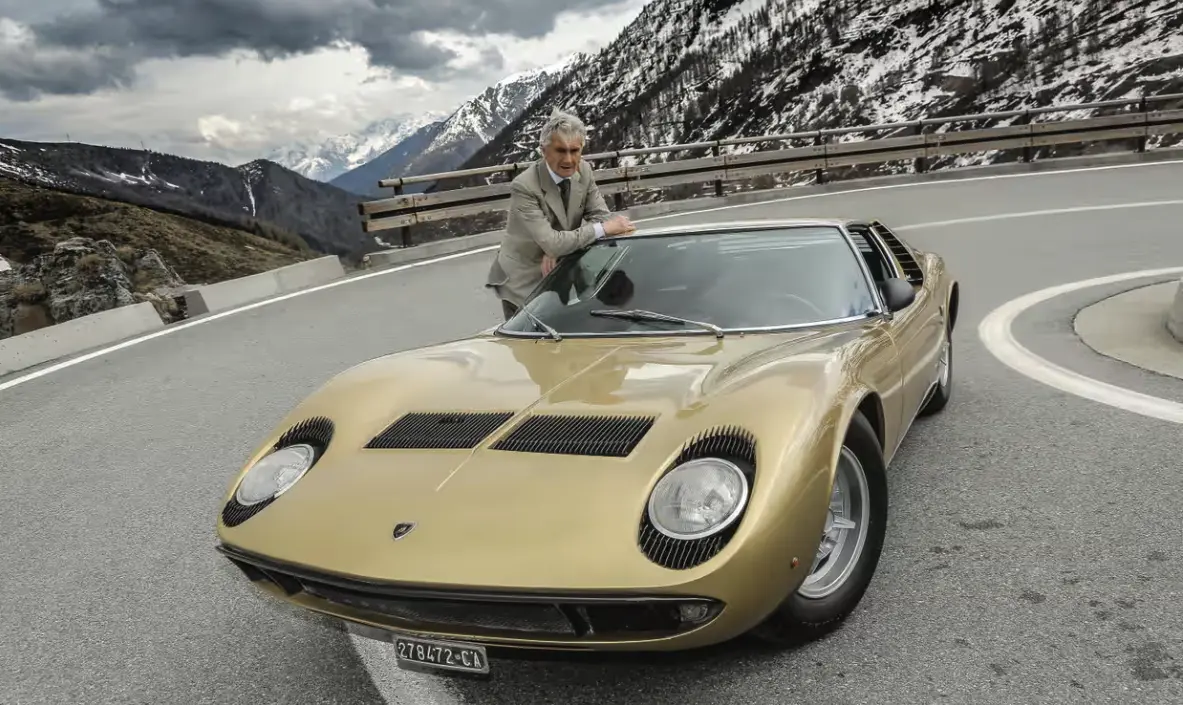Marcello Gandini, born in Turin, Italy, in 1938, was a figure whose influence in automotive design is both profound and far-reaching. Although he sadly passed away in March of 2024, the stamp of his particular genius on the world of high-end car design lives on. With a career that spanned several decades, Gandini’s designs have not only redefined the aesthetics of sports cars but also significantly impacted the broader field of automotive engineering. His work is celebrated for its innovation, boldness, and visionary approach, marking him as one of the most pivotal automotive designers of the 20th century. Supercars as we know them today would simply not be the same without the influence of Marcello Gandini.
Although Gandini is particularly remembered for his contributions to the design of Lamborghini cars like the Miura and the Countach, his aesthetic vision has made an impact that spans a variety of automakers and car types. In memory of this legendary designer, here’s a look back at his incredible career and legacy.
Beginnings
Marcello Gandini’s interest in automotive design began at a young age, influenced by the rich automotive culture of Turin, an epicenter for Italian car manufacturing. Despite a background that wasn’t directly linked to automotive engineering—his father was a musician, and he was educated in the context of a classical lyceum, where he studied piano—Gandini pursued industrial design, driven by a passion for cars. In fact, he would eventually leave school at age 18 against the objections of his parents.
Gandini’s major breakthrough came when he joined Carrozzeria Bertone in the mid-1960s. Although he had almost no education or experience in the field, owner Nuccio Bertone was struck by his passion and allowed him to apprentice for chief designer Giorgetto Giugiaro. Grupo Bertone was an independent design firm which had at various points been contracted to design and style cars for Abarth, Alfa Romeo, BMW, and Ferrari, to name a few. At Bertone, Gandini succeeded his mentor as chief designer, a significant role that would catapult him into automotive design stardom. Under his leadership, Bertone produced a series of iconic cars that would define a generation of sports vehicles.
One of Gandini’s first major designs at Bertone was the Lamborghini Miura. Introduced in 1966, when Gandini was just 28, the Miura was a revolutionary sports car that featured a rear mid-engine, rear-wheel-drive layout, which was a novel concept at the time. This design not only enhanced the car’s balance and performance but also allowed Gandini to sculpt a lower, more streamlined profile that was unlike anything seen before. The Miura’s eyelash-like louvers over the headlights and its smooth, flowing lines created a visual appeal that captured the essence of speed and elegance, effectively giving birth to the modern supercar.
Following the success of the Miura, Gandini continued to push boundaries with the Lamborghini Countach, first unveiled as a prototype in 1971. The Countach was a stark departure from the curvaceous Miura, featuring sharp, angular lines and a bold, wedge-shaped body. This design was not only striking but also functional, as the shape was conducive to better aerodynamics at high speeds. The Countach also introduced the now-iconic scissor doors, which became a signature feature of Lamborghini and a symbol of exotic cars.
Diversity in Design
Gandini’s talents were not confined to sports cars. He also left his mark on a variety of other vehicle types:
Lancia Stratos
The Lancia Stratos, another Gandini design, was primarily built for rally racing and is considered one of the most successful rally cars ever made. Its compact shape and mid-engine design contributed to its agility and performance on rough, twisty rally stages. The Stratos not only helped Lancia win multiple World Rally Championships but also demonstrated Gandini’s ability to design vehicles that were purpose-built for performance.
BMW 5 Series (E12)
Gandini’s influence extended into the luxury sedan market with his work on the first-generation BMW 5 Series (E12). Introduced in 1972, the E12 was a departure from BMW’s previous design language, featuring sharper lines and a more angular profile that would influence the brand’s aesthetic for decades. This model set new standards in the executive car market, blending performance with luxury.
Influence and Legacy
Gandini’s design principles often involved a keen focus on functionality integrated with radical visual design. He frequently experimented with materials and technologies, pushing the envelope on what was possible in car design. His visionary approach not only influenced the designs of his time but also set trends that would be followed by others in the industry.
Beyond specific models, Gandini’s broader impact on automotive design is seen in his bold approach to form and function, his pioneering use of composite materials, and his integration of the latest technology into his designs. His work encouraged a generation of designers to think outside the conventional paradigms and pursue innovation aggressively.
Marcello Gandini’s career reflects a deep commitment to redefining automotive design. His legacy is built on a foundation of iconic vehicles that continue to inspire and influence the design philosophy of modern automotive manufacturers. As we look at the sleek contours of today’s sports cars, the functional elegance of luxury sedans, and the rugged readiness of rally cars, the echoes of Gandini’s designs are unmistakable. His work remains a testament to the power of innovative design in driving the evolution of the automotive industry.





